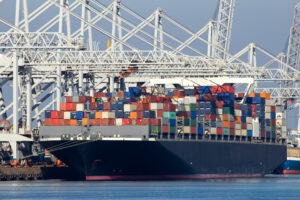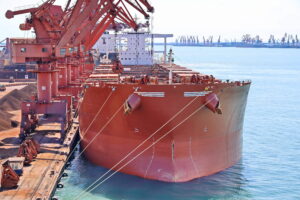The Israeli strikes on Iranian nuclear and military facilities on June 13, followed by Iran’s retaliatory actions, have heightened fears of a broader regional conflict and potential disruption to maritime traffic through the Strait of Hormuz. This sea passage, situated between Oman and Iran, serves as a vital conduit connecting crude oil exporters in the Middle East to global markets.
Fears have resurfaced that the Iran could target one of the world’s most vital oil arteries, the Strait of Hormuz.
However, market watchers believe that a complete closure of this sea passage is unlikely, given the strategic importance of the Strait of Hormuz to global oil supply.
While Iran has previously threatened to close the strait in response to geopolitical tensions, it has yet to act on such threats.
The prospect of a broader regional conflict following Israel’s airstrikes on Iran has renewed concerns over possible supply disruptions and rising oil prices.
Analysts are scrambling to predict the potential impact on shipping while some ship registries are already issuing advice to vessels operating in the Arabian Gulf.
Drewry: Oil Transit through Strait of Hormuz Unlikely to be Disrupted
“Although Iran has stated it has no intention of closing the Strait of Hormuz, any such move would have severe implications for global oil markets.
“The strait handles over 35% of the world’s seaborne crude oil trade, and viable alternatives to bypass it are extremely limited. All key Middle Eastern OPEC producers – Saudi Arabia, Iran, the United Arab Emirates, Kuwait, and Iraq – rely heavily on the strait for crude exports.
“Given the strategic importance of the Strait of Hormuz to global oil supply, a complete closure by Iran remains unlikely,” highlighted Drewry, a maritime research and consulting services provider.
Gibson Shipbrokers: Iran to Disrupt Shipping in Hormuz or Use Houthi’s to Increase Red Sea Attacks
“Iran could try to close the Straits of Hormuz. A prolonged closure is highly unlikely to succeed, but if it did, would have catastrophic implications for global oil trade. Approximately 20 million b/d of crude and products transit Hormuz daily, an amount which cannot be fully replaced from other sources or redirected via pipeline.
“Whilst tanker rates could surge following a closure, though in the long term they would likely suffer from a lack of cargo, whilst the global economy would also suffer from high energy prices. Given how critical the waterway is for the regional and global economy, any closure is likely to be short-lived.
“A more likely scenario is that Iran seeks to disrupt shipping activity in the region, which could include limited attacks, hijacking, and the harassment of ships passing by. Under such a scenario, the pool of shipowners willing to transit would likely shrink, leading to an increase in freight costs for exports via Hormuz.
“Demand for lifting crude from safer load zones in the Atlantic could also benefit, whilst higher oil prices might help reverse the decline in US production. Under this scenario Middle East exports would be largely sustained, with some upside for producers elsewhere in the world, likely benefitting freight rates.
“Iran could also seek to use the Houthi’s to increase attacks against Red Sea shipping, as well as targeting Israel. How much capacity the Houthi’s have remains unclear, given US efforts to substantially degrade their abilities this year. In any case, increased caution in the Red Sea is likely, with UK flagged vessels yesterday being warned against sailing through the waterway.
“Diplomatic options may also be considered, although it feels like the opportunity for such diplomacy may have now passed. The US could also step up sanctions pressure on Iran in an attempt to drive its export revenue even lower.”
Xeneta: Largescale Return of Container Ships to Red Sea Less Likely
“Any closure of the Strait of Hormuz would see services re-routed, with increased reliance on India West Coast ports for connecting the Far East to Indian sub-continent. The inevitable disruption and port congestion, as well as the potential for higher oil prices, would cause a spike in ocean freight container shipping rates, with carriers likely also pushing for a ‘security surcharge’ on these trades in the coming days,” Xeneta’s chief analyst Peter Sand said – the ocean and air freight intelligence platform.
“This escalation also makes a largescale return of container ships to the Red Sea seem less likely, a situation which continues to have a major impact on ocean container shipping rates 18 months after Iran-backed Houthi Militia in Yemen began attacking vessels in the region.
“Average spot rates from Far East to North Europe are up 62% since 1 December 2023, just before escalation in the Red Sea, while average spot rates to US East Coast – another trade that would ordinarily transit the Suez Canal – are up 165%.”
Ambrey: Vessels to Prepare Rerouting of High-Risk Transits
“At the time of writing, no impact to shipping has been reported. Israel did not target maritime infrastructure and there are a very low number of Israel-affiliated vessels in the wider region. The Israeli airstrikes focused on targets inland. Iran’s UAV strike was assessed to have targeted military and nuclear sites,” noted the security services specialist in maritime Ambrey.
“Israel’s attack was on an unpresented scale and scope. Whilst there have been notable successes, the damage to Iran’s nuclear capabilities is unclear, meaning that further Israeli military strikes are possible.
“Companies and vessels are advised to prepare rerouting of high-risk transits following military strikes. In the event of escalation, merchant vessels are advised to reconsider transiting through the Strait of Hormuz and close to Iranian waters, as well as to seek drifting locations close to friendly and protected territorial waters.”
St Kitts and Nevis International Ship Registry: Advice for Vessels Operating in Arabian Gulf
The St Kitts and Nevis International Ship Registry issued a safety and security bulletin on Friday to “raise awareness” to (maritime registrars, shipowners, ship managers and ship operators) to ensure the safety of St. Kitts and Nevis vessels and their crews.
The bulletin is issued following an advisory issued by the United Kingdom Maritime Trade Operations (UKMTO) office to shipping warning of potential military escalation in the Arabian Gulf region that could directly impact maritime operations.
“As informed by UKMTO, the alert came amid deteriorating US-Iran nuclear negotiations. At present, there is no direct evidence that commercial shipping is being targeted. However, given the proximity of regional flashpoints to major maritime routes and chokepoints, the potential for rapid escalation involving the maritime environment should not be discounted.
“Additional threats from non-state actors such as the Houthis, who have publicly stated their intent to respond if the U.S. is perceived to be involved, also increase the risk of a broader regional impact.
“Threat will be elevated until further notice for vessels operating in or transiting the Arabian Gulf, Strait of Hormuz, and Northern Arabian Sea. Shipmasters and CSOs are advised to maintain close contact with regional maritime security centres (UKMTO and Maritime Security Centre Indian Ocean (MSCIO) and monitor official government and military advisories.
“Vessels should report any unusual activity or security incidents to UKMTO via established Voluntary Reporting Schemes and keep communication equipment manned and functional at all times.
“Companies are urged to apply Best Management Practice (BMP) Maritime Security (MS) and review contingency plans for routing, crew welfare, and emergency response in the event of a significant regional escalation.”



